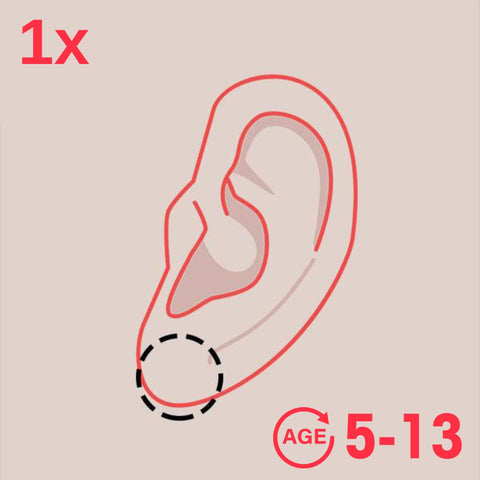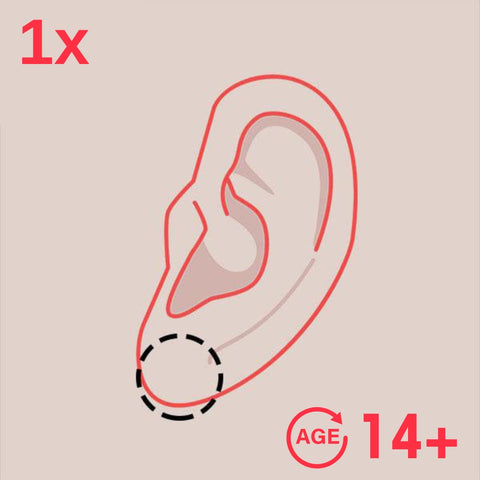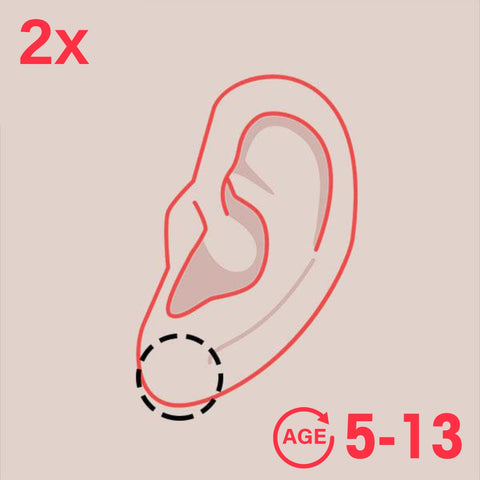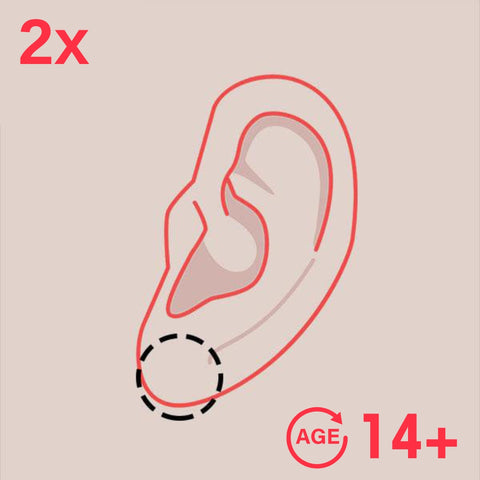Are you looking to enhance your style and make a bold fashion statement? Conch ear jewelry is the perfect way to add flair and personality to your appearance. With a variety of designs, materials, and styles available, finding the best conch ear jewelry can be overwhelming. In this comprehensive guide, we will explore everything you need to know about conch ear jewelry, from the different types to the best places to shop. Get ready to explore the world of conch ear jewelry!
Inner, outer, and upper conch piercings involve perforating the auricle, also known as the conch. The stylish and bold addition provides visual flair, especially for people with multiple ear piercings. Here’s how you can strategically place and adorn a conch piercing.
What size should a conch piercing be?
Most piercers follow a standard guideline when determining piercing sizes. Most conch piercings come in 16G or 18G, though your specific gauge may vary in size. A 16G piercing translates to 0.40 inch (1.01 cm) in width, while 18G correlates to 0.50 inch (1.27 cm).
Everyone’s body is unique, so piercers shouldn’t take a one-size-fits-all approach. Varying the body jewelry based on your body ensures you receive the best possible fit. If you have questions about your conch piercing’s size, reach out to your piercer and ask about their practices.

What kind of earring goes in a conch?
One of the main reasons to love a conch piercing is its versatility. You have various conch ear jewelry options that range from classic to modern to avant-garde. Here are some of the best options for your ears:
Conch Studs
The conch stud offers the perfect combination of nuance and class. The compact surface serves as a decorative attachment for inner and outer conch piercings. Most people gravitate to the labret stud, also known as the flat-backed stud, with a simple charm on the end.
If you opt for a conch stud, make sure to invest in threadless pieces. The threading doesn’t go through the conch piercing. This design means you don’t have to worry about screwing the tops in or out of place. Threadless options also let you change up the look in seconds for added versatility.
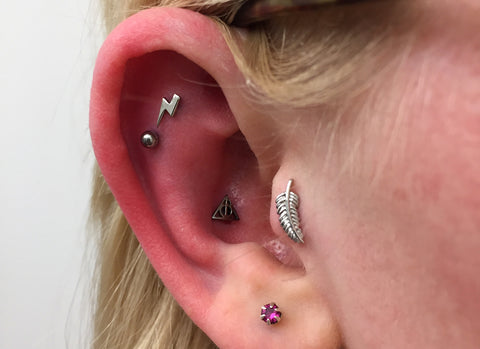
Barbells
Take your piercing jewelry to the next level with a barbell. You can’t go wrong with a 14K gold horseshoe from Junipurr Jewelry, which stands out for its polished finish and tarnish-free glow. Horseshoe-shaped barbells can pull double duty as piercing jewelry for orbital, lip, tragus, daith, septum, and snakebite perforations.
Barbells don’t have to resemble a horseshoe; you can find both curved and straight pieces of appealing piercing jewelry. Both options offer supreme comfort to the wearer and are easy to clean and maintain. Straight barbells mirror the flat-backed stud, with the primary difference being the rounded ball on the back.
Rings
Captive bead and clicker rings present appealing alternatives to traditional conch ear jewelry. It features a hoop with a single bead held in place with tension from either side of the ring. You can remove the bead to release the tension before inserting the jewelry. Clicker rings provide an easy-to-use accessory with a hinged clasp for the ultimate convenience.
Not sure what conch ear jewelry is right for you? Visit your local body jewelry professional to learn more about your proper fit. The in-person visit lets piercers determine the appropriate sizes and gauges for your body. You can also find a complete array of conch ear jewelry products at Pierced.co.
Our Favourite Conch Jewelry
Best Materials for Conch Ear Jewelry
When it comes to conch ear jewelry, choosing the right material is essential for comfort, safety, and durability. Here are some of the best materials commonly used:
Surgical steel is a popular choice for conch ear jewelry due to its durability, hypoallergenic properties, and affordability. It is resistant to corrosion and unlikely to cause irritation or allergic reactions, making it suitable for most people.
Titanium is a lightweight and biocompatible material, making it an excellent choice for those with sensitive skin or metal allergies. It offers durability, corrosion resistance, and an array of vibrant colors when anodized.
Gold conch ear jewelry adds a touch of luxury and elegance. It comes in various purity levels, such as 14k and 18k, and a range of colors, including yellow, white, and rose gold. Ensure the gold jewelry is nickel-free to prevent allergies.
Sterling silver conch ear jewelry offers a timeless and affordable option. However, it is important to note that some individuals may be sensitive to silver, as it contains a small amount of other metals. Look for sterling silver jewelry labeled as hypoallergenic.
Bio-compatible materials, such as PTFE (Polytetrafluoroethylene) and Bioplast, are ideal for initial piercings or individuals with metal sensitivities. These materials are flexible, lightweight, and reduce the risk of irritation or allergic reactions.
Can you wear AirPods with a conch piercing?
Before you commit to a conch piercing, you should familiarize yourself with the piercing and recovery process. Conchs are suitable for most ear types, and like most ear piercings, causes some degree of pain. It’s impossible to put a number on the pain rating because everyone has a different tolerance. While the piercing occurs on the cartilage instead of the lobe, it should feel comparable to other perforations.
The key, especially when it comes to wearing AirPods, lies in the healing process. Conch piercings take up to nine months to fully heal. The range depends on how well you maintain the cartilage and your overall health.
Once your ear fully heals, you should have no problem wearing AirPods or other in-ear headphones. Make sure the buds sit comfortably in the ear when you use them. You may experience minor discomfort or irritation if the headphones rub against the body jewelry.
One way to circumvent the problem, even while your ear heals, is to purchase over-ear headphones. They cup the outside of the ear, which eliminates the risk of unwanted friction. Over-ear headphones range in price anywhere from a few dollars to a couple hundred.
How long does it take for a conch piercing to heal?
The average conch piercing takes three to nine months to heal. The exact duration depends on your health and how well you take care of the piercing after the procedure. As a point of comparison, cartilage piercings take more time to heal than lobe piercings, which average 1.5 to 2.5 months.
The reason a conch piercing takes longer to heal is the location. Your cartilage is a form of avascular connective tissue, which means the region doesn’t receive blood supply. While this section of the ear can endure strain and stress, it takes longer to heal by design.
Usually, after you get a conch piercing, your red blood cells and platelets work to stop the bleeding. Your body starts developing collagen fibres to form a new barrier that prevents unwanted bacteria or pathogens from entering the body. This reaction is why your other piercing forms a small scab after the procedure.
Cartilage doesn’t contain blood vessels, so your body can’t directly send in red blood cells and platelets. The area relies on adjacent connective tissue to repair the opening. The healing process takes time, but you can expedite it with proper aftercare.
The best aftercare mitigates the chance of inflammation and infection. At Pierced, we recommend wiping the area twice daily with a sterile saline solution. Your ear will also thank you if you don’t alter or fiddle with the conch ear jewelry during the healing process.
Piercing Studios Near You
Mississauga
Square One Shopping Centre
100 City Centre Drive, Mississauga,
ON L5B 2C9
Phone
+1 (905) 232 -7226
Need an Experienced Piercer in Mississauga?
Working with an experienced piercer can make all the difference when it comes to your piercing experience. If you’re in the Mississauga, Ontario area and have any questions about ear piercing, body piercing or jewelry, give us a call or stop by our piercings studio today. We’d love to help walk you through what to expect and help you choose the right option.



